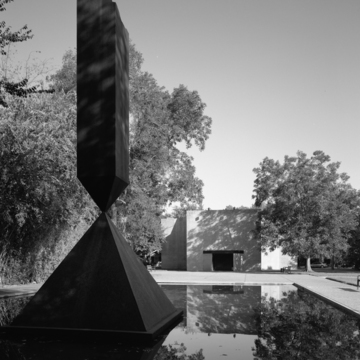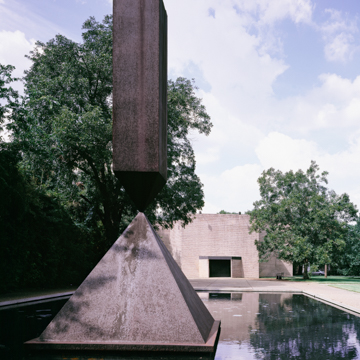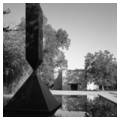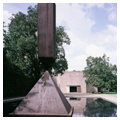In 1964 Dominique and John de Menil commissioned abstract-expressionist artist Mark Rothko to prepare a set of paintings for a chapel for the University of St. Thomas. Philip Johnson designed the chapel building to sit at the south end of the university's academic mall. A disagreement between Rothko and Johnson over how tall the chapel's skylight should be led Johnson to withdraw from the project. After the University of St. Thomas expressed misgivings about its ability to maintain the chapel as an art museum, it too withdrew. Dominique and John de Menil had Barnstone and Aubry, Johnson's associate architects, adapt his design for a new site three blocks west of the university campus. The Rothko Chapel is an ecumenical center where events focusing on religious understanding, peace, justice, social responsibility, art, and music occur, surrounded by Rothko's abstract paintings. In front of the chapel, on axis with the entrance, is Barnett Newman's Broken Obelisk (1967), which the Menils installed as a memorial to the Reverend Dr. Martin Luther King Jr.
You are here
Rothko Chapel
If SAH Archipedia has been useful to you, please consider supporting it.
SAH Archipedia tells the story of the United States through its buildings, landscapes, and cities. This freely available resource empowers the public with authoritative knowledge that deepens their understanding and appreciation of the built environment. But the Society of Architectural Historians, which created SAH Archipedia with University of Virginia Press, needs your support to maintain the high-caliber research, writing, photography, cartography, editing, design, and programming that make SAH Archipedia a trusted online resource available to all who value the history of place, heritage tourism, and learning.












